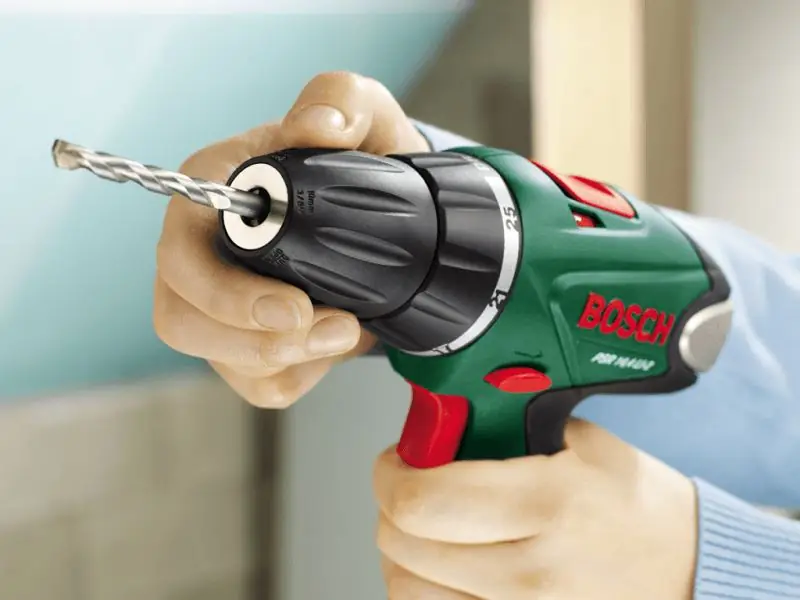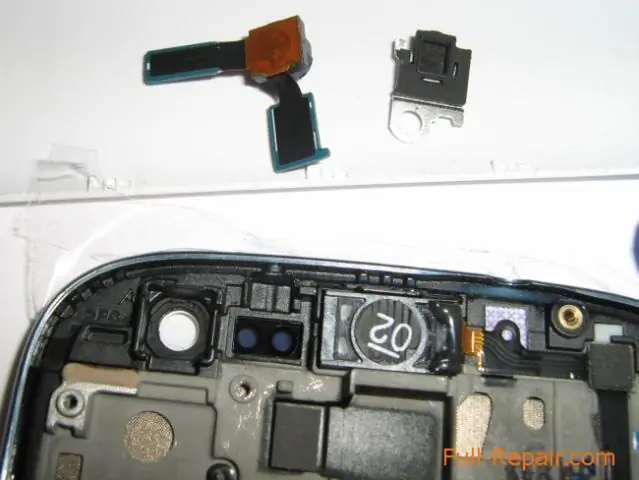
Table of contents:
- Author Bailey Albertson [email protected].
- Public 2023-12-17 12:53.
- Last modified 2025-06-01 07:32.
Several ways to make a hair dryer

The building hair dryer is used to heat various materials. The directed flow of very hot air allows you to remove unnecessary paint, solder plastic, and glue the film. With its help, you can warm up pipes in frost and kindle charcoal in the grill. The heating temperature ranges from 50 to 600 degrees. This tool is easy to make with your own hands at a lower cost than buying.
How does a hair dryer work?
Any mounting hair dryer has the main elements, which are indispensable for obtaining a hot air stream:
- Thermal insulation jacket with heating element.
- Nozzle.
- Electric motor.
- Fan.
- Power button.
- Hair dryer case.
- Power cable.

The main elements are enclosed in a housing
From the button, the wires go to the motor and the heating element. Therefore, after switching on, the engine starts and the spiral heats up. The fan spins and blows hot air into the nozzle. The heat shield prevents the plastic housing from melting.
Making a construction hair dryer yourself
The hot air gun can be made in different ways.
Without motor, but with fan
You will need the following details:
- two power supplies for 12 V;
-
40mm computer fan. It has a printed circuit board that controls the rotation. Therefore, no engine is needed;

Fan The fan from the computer has a board that controls its rotation
-
resistor 10 watts. An air duct will be made of it;

Resistor C5-5 The body of the C5-5 resistor fits the size of the coil
- nichrome wire with a diameter of 0.5-1 mm;
- mica is needed for insulation between the spiral and the tube;
- fiberglass material;
- glue for rubber or Moment. It burns out from high temperatures. But during assembly you cannot do without it;
-
terminal blocks for electrical engineering. They are needed to fix and transfer current between the cable and the spiral;

Terminal blocks Terminal blocks are needed to fix and connect the wires
- tin non-corrugated tin can. For hair dryer body;
- 5 ml syringe. We will make a handle out of it;
- three washers: M5, M4, M3;
- screw M3;
- cambric 3mm.
Prepare the tube first. To do this, file one rolled edge off the resistor and remove the contents.
-
Wrap the spiral around a tube or rod with a diameter of 6 mm. The turns should not touch each other. Insert the long end into the spiral.

Spiral The spiral should fit the tube and have one end inside it
-
Cut the tin can to form a leaf. Make a drawing on paper. Stick it on a tin sheet. Make holes and cut the workpiece along the contour. Fold the part along the dotted lines.

Hull drawing The drawing of the body is applied to paper and cut out of tin
- Lubricate the paper with acetone and remove it.
- Insert the nozzle washer into the tube. Roll a single layer of mica roll and insert into tube. Place the spiral there.
-
Assemble the mount.

Assembly of the body to the syringe The assembly for attaching the body to the syringe with all fasteners
-
Assemble the hair dryer.

Hair dryer design The design drawing of the hair dryer shows a mount with a handle and internal elements
-
Connect the coil to the cable.

Coil connection Nichrome spiral is not solderable. Therefore, it is screwed to the contacts
- Insert the wires from the fan and heating element into the handle. Plug the mounting holes of the fan with foam rubber or foam rubber.
- Connect the wires to the power supplies.
With engine
If you don't have a PCB fan, you can use a micromotor and a homemade canned impeller. You will also need a soldering iron. The electrical connection is the same as in the version without motor.
-
Remove the tip from the soldering iron. Cut off the handle and grind off the edges.

Soldering iron without handle Soldering iron handle is cut to connect to the body
-
Take a steel tube and insert a heating element into it.

Heating element tube The tube must fit the heating element
-
Attach the impeller to the motor shaft. Match the housing to fit these two parts and insert them.

Motor housing A motor with an impeller is inserted into the plastic housing
-
Slide the body onto the soldering iron handle and glue.

Soldering iron housing assembly The motor body is glued to the handle of the soldering iron
Video: how to make an editing hair dryer with a motor
From an ordinary hair dryer
A building hair dryer from the usual is a convenient option. You will have one cable instead of two. No need to look for a motor with a fan. But it is necessary to rework the device. It is necessary to completely replace the heating element and isolate it from the plastic casing of the hair dryer.
- Disassemble the case.
- Disconnect the heating element and all plastic parts.
- Wrap a nichrome wire spiral around the ceramic tube. Wrap it in mica. Insert into a metal tube. Connect the coil to the hair dryer transformer.
-
Wrap several layers of glass wool around the metal tube for thermal insulation.

Heating element tube insulation To prevent the plastic casing of the hair dryer from heating up, the metal tube is wrapped with glass cloth
-
Put on the plastic cover of the hair dryer.

Hair dryer after assembly The resulting construction hair dryer looks like a regular one, but with a metal nozzle
Selection of wire and rod for winding the spiral
The spiral should be wound according to the diameter of the wire and rod. It should only be nichrome. It is very hot and does not melt. But it also does not lend itself to soldering.
Table: dependence of the diameter of the rod and the length of the spiral on the thickness of nichrome
| 0.5 mm | 0.6 mm | 0.7 mm | 0.8 mm | 0.9 mm | 1 mm | ||||||
| d1, mm | d2, mm | d1, mm | d2, mm | d1, mm | d2, mm | d1, mm | d2, mm | d1, mm | d2, mm | d1, mm | d2, mm |
| 2 | 64 | 2 | 76 | 2 | 84 | 3 | 68 | 3 | 78 | 3 | 75 |
| 3 | 56 | 3 | 53 | 3 | 62 | 4 | 54 | 4 | 72 | 4 | 63 |
| 4 | 46 | 4 | 40 | 4 | 49 | 5 | 46 | 6 | 68 | 5 | 54 |
| 5 | thirty | 5 | 33 | 5 | 40 | 6 | 40 | 8 | 52 | 6 | 48 |
| 6 | 26 | 6 | thirty | 6 | 34 | 8 | 31 | - | - | 8 | 33 |
d1 is the diameter of the bar. d2 is the diameter of the spiral. 0.5-1 mm is the thickness of the nichrome wire.
For household work, you can make a technical hair dryer yourself. The main thing is to properly wind the spiral and make a thermal protective casing so that it does not melt.
Recommended:
Construction Hair Dryer (industrial): How To Choose For A House, Varieties And Characteristics, What Is It For And What Can They Do

Types of building hair dryers, their purpose. The device and principle of action of building hair dryers. How to use a hairdryer and repair it yourself
Do-it-yourself Hair Dryer Repair: What To Do If It Burns Out, How To Disassemble A Hairdryer, How To Remove The Impeller (fan), Replace The Spiral + Video

Hair dryer device, diagnostics of the main structural elements. The procedure for disassembling, replacing and repairing broken parts of a hair dryer
How To Cook Frozen And Fresh Shrimp Correctly And How Much: Cooking Ordinary, Royal, Description Of Methods With Photos And Videos

Description of different methods of cooking shrimp: how and how long to cook fresh and frozen, on the stove, in a multicooker and microwave
How Does Pancake Flour Differ From Ordinary Flour And Is It Possible To Make It Yourself

How is pancake flour different from ordinary flour? The composition of pancake flour, its use in cooking. Can you make pancake flour yourself
Unusual Use Of A Hair Dryer In Everyday Life

Several possibilities of a hair dryer to help solve everyday problems
